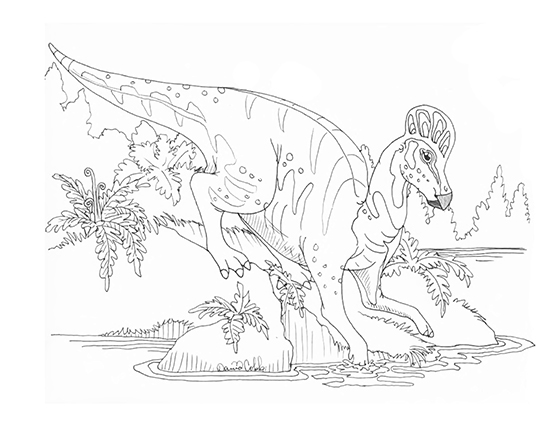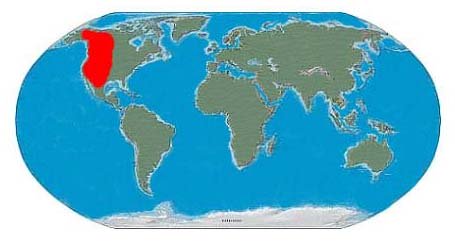Sign up for Lesson Plans, discounts & more!
Corythosaurus
Helmeted Duckbill
By Eliza Jensen
Corythosaurus was a very odd-looking dinosaur indeed! This dinosaur is classified as a lambeosaurine. Try saying that 10 times fast. Phew! Lambeosaurines are a group of Hadrosaur dinos that had a round, bony crest on top of the skull. In fact, the name actually means “helmet lizard” in Greek. Some say this bony crest resembled a Corinthian helmet, used in the Greek city-state of Corinth. Do you think this is coincidence?
Corythosaurus was classified as an ornithischian, which means they had a hip structure similar to the hip structure of birds. In fact, paleontologist Alfred Sherwood Romer hypothesized that birds might have evolved from this line of dinosaur. He used it, among other orthnithischians, as evidence for his theory.
There are two known species:
Corythosaurus casuarius
Corythosaurus intermedius
Corythosaurus Fact File
Name |
Corythosaurus |
Classification |
lambeosaurine Hadrosaur |
Food |
Herbivore |
Length |
30 feet |
height |
7 feet at the hip |
weight |
3-4 tons |
Range |
Western North America |
Time Period |
Late Cretaceous Period |
Corythosaurus stood about 30 feet tall and weighed between 3 and 4 tons. It lived about 77–75.7 million years ago, during the Upper Cretaceous Period, in the area now known as North America.
It ate plants with a toothless duck-like bill. Some fossils have been found with the contents of their stomach still there! The meal included conifer needles, fruits, seeds, and twigs.
The Corythosaurus Timeline
Mesozoic |
||
Triassic |
Jurassic |
Cretaceous |
This dinosaur was a very mysterious creature for the early paleontologists. Paleontologist Barnum Brown, nicknamed Mr. Bones, first discovered and described this dinosaur in 1914. His descriptions of the dinosaur were proven wrong when further studies showed errors in assumptions he made about the anatomy. Previous findings of similar species were actually not related to the 1914 discovery. With time, the Corythosaurus was proven to be truly unique.
<br><br>
<br><br>
As mentioned, Barnum Brown was the first to discover Corythosaurus bones in 1914. This was a very exciting and amazing find because not only was it a mostly complete skeleton. Typically, fossils are scattered and usually they are found incomplete, so this was incredibly rare. More unusual, however, was that most of the skin was still intact! Soft tissue rarely fossilizes. The skeleton was preserved in clay, making it difficult to expose the skin to those conditions that usually result in destruction. The skeleton, including the skin, are now on display in the American Museum of Natural History.
Back to Dinosaur Central
Dinosaur Bone For Sale
Check out some of the Educational Materials for sale on our sister site fossilicious.com.

interested in more? If so, you may want to check out our other sites:
fossilicious.com - Our online fossil and mineral rock shop.
rocksandminerals4u.com - An educational site about rocks, minerals, and geology.
Geologic Time Geologic Time Line
Cenozoic Era
Quaternary
Neogene
Paleogene
Mesozoic Era
Cretaceous
Jurassic
Triassic
Paleozoic Era
Permian
Carboniferous
Devonian
Silurian
Ordovician
Cambrian
Archean Time
Hadean Time
Teachers Resources
Activities for Education and Fun
Earth Science Lesson Plans
Activities For Kids
Fossil Lesson Plans
Fossil Activities
Education Articles
Coloring Pages
Dinosaur Coloring Pages
Montessori Materials
Geology Club
Fossil Hunting
 |
 |
 |






